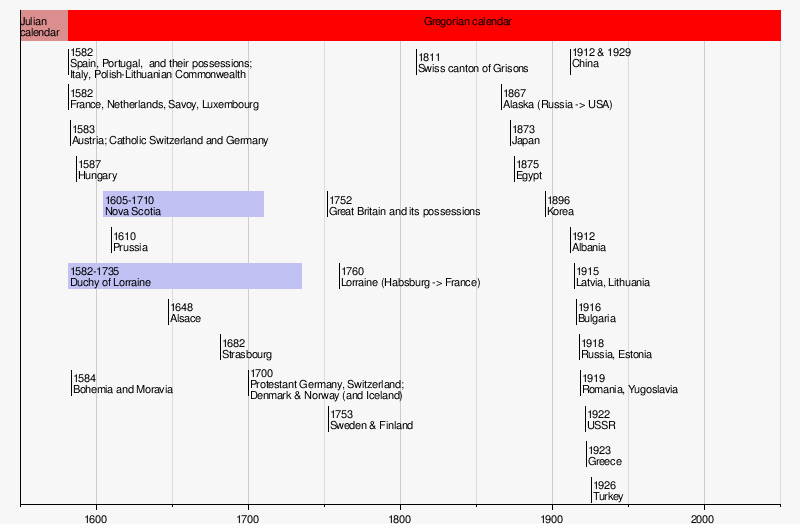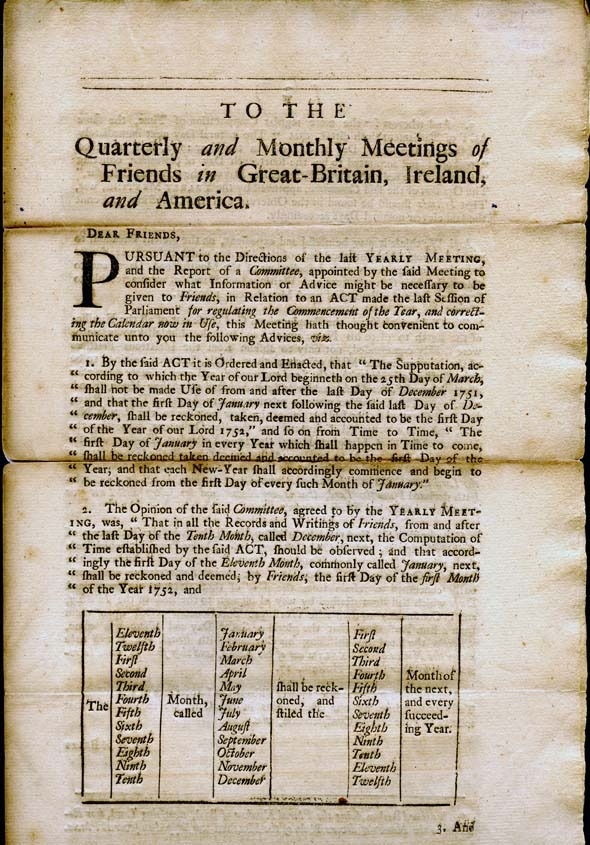Discussion of Calendars
Gregorian Calendar
The Gregorian calendar is the calendar that is used throughout most of the world. It began being used in 1582. It replaced the previous Julian calendar because the Julian calendar had an error: it added a leap year (with an extra day every four years) with no exceptions. The length of the Julian year was exactly 365.25 days (365 days and 6 hours), but the actual time it takes for the Earth to go around the Sun once is closer to 365.2425 days (about 365 days, 5 hours and 49 minutes). This difference is about eleven minutes each year.
Adoption
It was first suggested by the Neapolitan doctor Aloysius Lilius, and was made official by Pope Gregory XIII, for whom it was named, on February 24, 1582. The official change took place the following October, when Thursday, 4th was followed by Friday, 15th.

People sometimes use the term N.S. or New Style to mean the Gregorian calendar, with Old Style (or O.S.) meaning the Julian calendar.
Source: Wilkipedia
Calendar Changes Occured in 1751 in England, Wales, Ireland and British Colonies
Impact to Quaker Dates

"Up to and including 1751 the Julian calendar was used in England, Wales, Ireland, and the British colonies overseas. In these places the year officially began on 25 March. As an example, 24 March 1750 was followed the next day by 25 March 1751. In 1752 the law changed: the year 1751 began on 25 March 1751 and ended on 31 December 1751, to be immediately folowed by 1 January 1752. It is important to note that in Europe and in Scotland the new calendar (Gregorian) had already superseded the Julian calendar.
Quakers followed the English practice, with one exception. They objected to using those names of days (Sunday to Saturday) and months (January to August) which derived from pagan gods, substituting numbers. Thus Sunday was for them "First Day." Until 1752, they had no problem with the months September to December, which were derived from numbers, but for the other months they wrote out "First Month," "Second Month," and so on. They sometimes used Roman numerals (i-xii) for these, and sometimes Arabic (1-12). After 1752 all months were referred to by Quakers by their number. September became "Ninth Month" and so on.
Today some researchers find it useful to write down the old style numbers as in the original text, but add the new style names in square brackets, such as: 27 iv [June] 1731 or 29 4 mo. [June] 1731. Most computer programs require the use of modern dating. In this case researchers should use the old date, but note them as "o.s." (old style) so that the reader knows that it has not been converted.
Double Dating
January and February present some complications. The English who were aware of the difference between the two calendars often "double-dated" documents by giving both their own and the Gregorian calendar year to avoid confusion, so that 8 11 mo 1732 may appear as 8 11mo February] 1732/3. The first 24 days of March present even greater complications. Often these are double-dated, ie. 21 1mo [March] 1708/9. When they are single-dated, the writer is usually but not always anticipating the year beginning on the 25 March so 8 1mo [March] 1734 is probably 8 1mo [March] 1734/5, but may be 8 1mo [March] 1733/4."